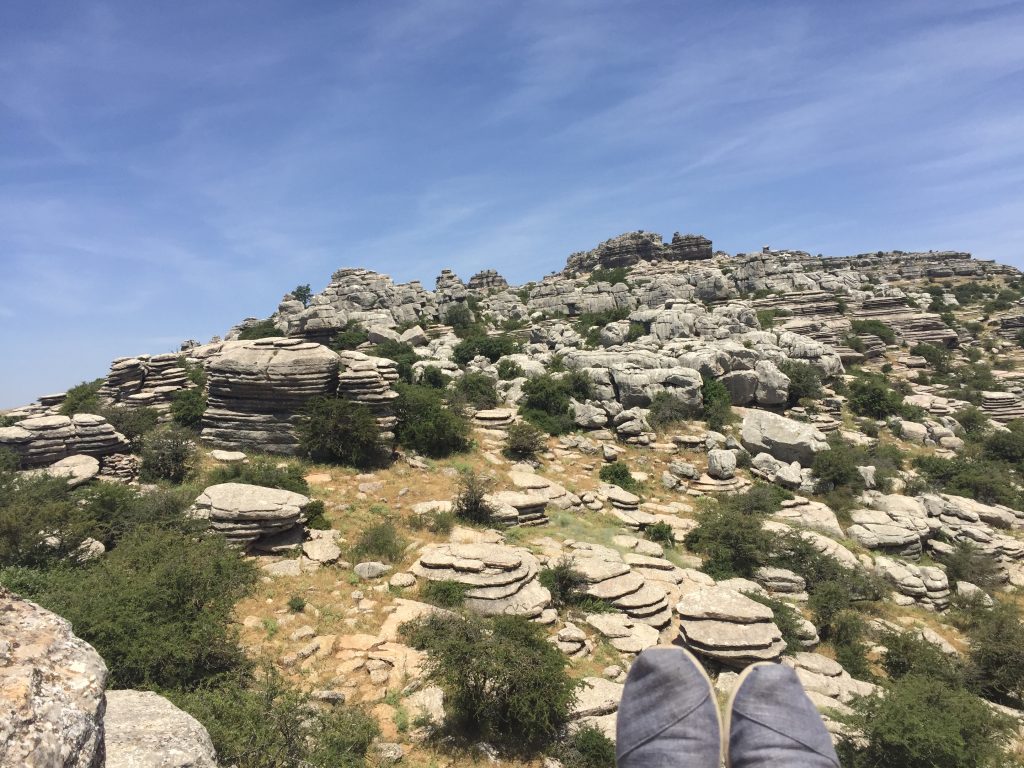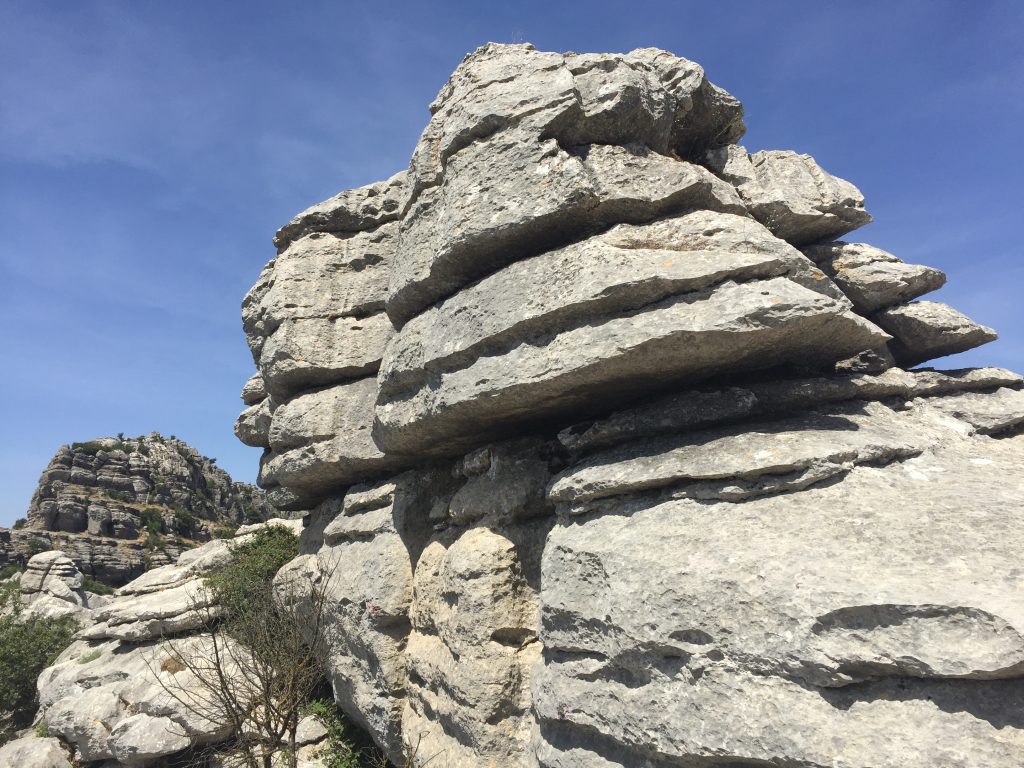besides really old trees, you know what else doesn’t usually get associated with history — but actually has a lot to tell? rocks, that’s what! they’re in most places, and can definitely tells lots of stories, even when they’re not particularly interesting at first glance.
on our andalusian roadtrip last summer we made a detour through the torcal de antequera, a famous karst landscape. the slovenes gave the name to these special limestone topographies (with their caves and intermittent lakes), but they can be found a bit all around the world.
in antequera, they rise above the hills in impressive stratified forms… like piles of pancakes!
wikipedia explains where they came from:
The Jurassic age limestone is about 150 million years old and was laid down in a marine corridor that extended from the Gulf of Cádiz to Alicante between the present Atlantic Ocean and Mediterranean Sea. These seabeds were uplifted to an elevation of over 1300 meters during the Tertiary era, resulting in a modest mountain range of flat-lying limestone, which is rare in Andalucia.
so they used to be in the sea, which was much more inland than what it is now. neat!
do you know how rocks split? they can dissolve or exfoliate for instance, but my favourite is called freeze-thaw. in this weathering process, water seeps into the cracks of the rocks. when it freezes, its volume increases about 10%, but it has no place to go… thus cracking the rocks in its expansion. when it melts, the water then travels further into the rock, repeating the process. voilà!
i still think i could have been a geologist, in a different life. :)




